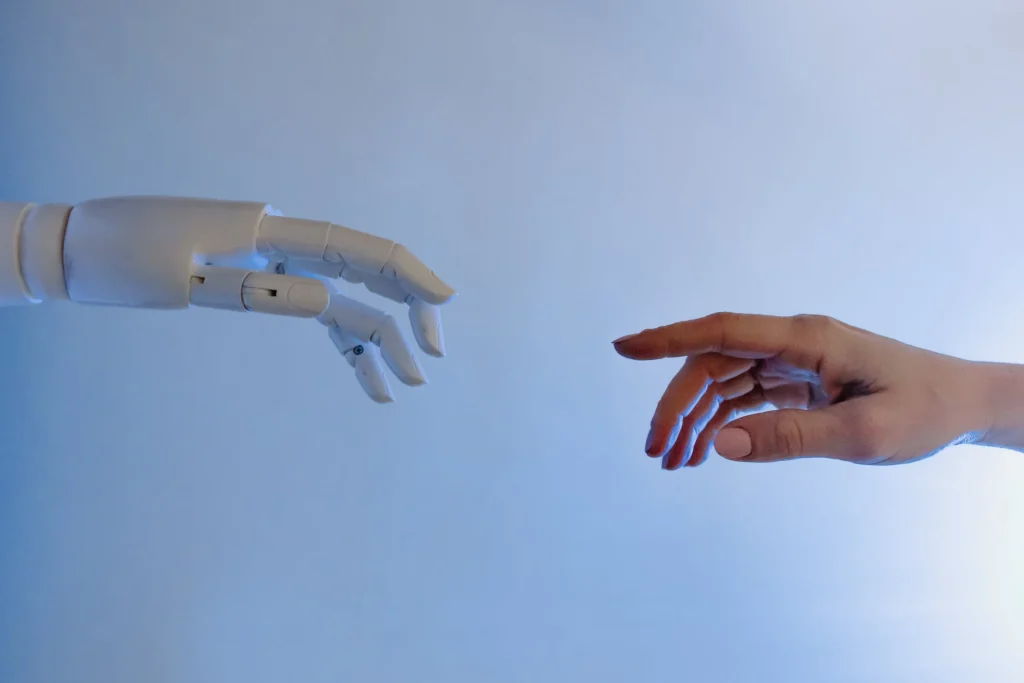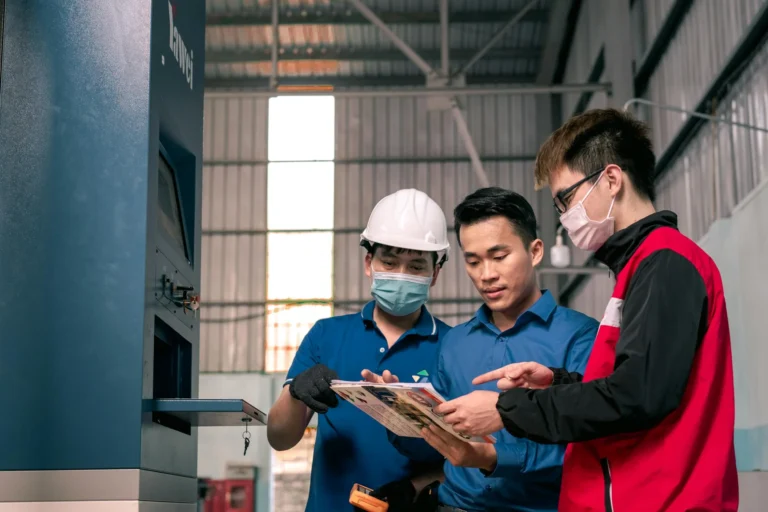The building and construction industry has witnessed significant technological advancements over the past few decades. These innovations have not only improved efficiency, reduced costs, and enhanced safety, but have also revolutionised the way we design, construct, and maintain our built environment. In this article, we will explore the impact of technology on the building and construction industry, focusing on the key innovations that are shaping the future of construction.

I. Building Information Modeling (BIM)
Building Information Modeling (BIM) has transformed the planning, design, and construction process by allowing architects, engineers, and contractors to create, share, and analyse 3D digital representations of buildings. This comprehensive approach facilitates communication, streamlines decision-making, and improves project outcomes by:
Enhancing collaboration: BIM allows project stakeholders to work together seamlessly, addressing potential issues and making informed decisions throughout the project lifecycle.
Reducing errors and rework: By providing a central repository for all project data, BIM helps to minimise mistakes and costly rework by detecting clashes and inconsistencies early in the design process.
Improving cost and time management: BIM enables more accurate cost and schedule estimations, leading to better resource allocation and more efficient project management.
II. Prefabrication and Modular Construction
Prefabrication and modular construction involve the off-site production of building components, which are then transported to the construction site for assembly. This innovative approach offers several advantages over traditional construction methods, including:
Enhanced quality control: Off-site production allows for more stringent quality control measures, resulting in higher-quality building components and improved overall building performance.
Reduced construction time: By streamlining the production process and allowing for simultaneous site preparation and component fabrication, prefabrication and modular construction can significantly reduce construction timelines.
Minimised waste and environmental impact: The controlled environment of off-site production facilities leads to more efficient material usage and reduced waste, resulting in a lower environmental footprint.
III. Robotics and Automation
Robotics and automation have the potential to revolutionise the construction industry by increasing efficiency, reducing labour costs, and improving safety. Some key applications of robotics and automation in construction include:
Robotic bricklaying: Robotic bricklaying systems can lay bricks faster and more accurately than human workers, increasing productivity and reducing the potential for errors.
3D printing: Large-scale 3D printers can create building components or even entire structures on-site, reducing material waste and enabling innovative architectural designs.
Drones: Unmanned aerial vehicles (UAVs) can be used for site surveying, inspections, and monitoring construction progress, providing real-time data and reducing the need for manual labour in hazardous situations.
IV. Green and Sustainable Technologies
As the demand for sustainable construction practices grows, the industry has turned to technology to develop innovative solutions that reduce the environmental impact of buildings. Some of the most promising green and sustainable technologies include:
Solar power integration: Photovoltaic (PV) panels and solar water heaters can be integrated into building designs to generate clean, renewable energy and reduce reliance on fossil fuels.
Energy-efficient systems: Technologies such as LED lighting, smart thermostats, and energy recovery ventilation systems can be used to reduce a building’s energy consumption and improve overall efficiency.
Green building materials: The development and use of sustainable building materials, such as recycled concrete, reclaimed wood, and low-VOC (volatile organic compound) products, can help to reduce the environmental impact of construction projects.
V. Virtual Reality (VR) and Augmented Reality (AR)
Virtual Reality (VR) and Augmented Reality (AR) technologies are changing the way architects, engineers, and contractors visualise and interact with building designs. These immersive technologies offer numerous benefits to the construction industry, including:
Improved design visualisation: VR and AR enable stakeholders to experience a 3D representation of a building before construction begins, allowing for better understanding and communication of design concepts.
Enhanced collaboration: Using VR and AR, project teams can collaborate more effectively by virtually walking through the building, identifying potential issues, and making informed decisions.
Streamlined training and safety: VR and AR can be used to train workers in a safe and controlled environment, reducing the risk of accidents and improving overall job site safety.
VI. Internet of Things (IoT) and Smart Buildings
The Internet of Things (IoT) refers to the network of interconnected devices and sensors that communicate and exchange data. In the context of the construction industry, IoT can be used to create smart buildings that monitor and optimise energy consumption, enhance security, and improve overall occupant comfort. Key applications of IoT in construction include:
Energy management: IoT-enabled sensors can monitor and control lighting, HVAC systems, and other energy-consuming devices, optimising energy usage and reducing utility costs.
Predictive maintenance: By monitoring the performance of building systems and equipment, IoT can help identify potential issues before they become costly repairs, leading to more efficient maintenance practices.
Occupant comfort and productivity: IoT can be used to create personalised environments for building occupants, adjusting lighting, temperature, and air quality based on individual preferences, leading to increased comfort and productivity.

VII. Artificial Intelligence (AI) and Machine Learning
Artificial intelligence (AI) and machine learning are making a significant impact on the construction industry by automating complex tasks, optimising processes, and providing valuable insights. Some key applications of AI and machine learning in construction include:
Project scheduling and management: AI can analyse historical project data and optimise project schedules, improving resource allocation and reducing delays.
Construction site safety: AI-powered surveillance systems can monitor job sites, detect potential hazards, and alert workers to unsafe conditions, reducing the risk of accidents.
Predictive analytics: Machine learning algorithms can analyze vast amounts of data to identify patterns, trends, and correlations, helping construction professionals make data-driven decisions and optimize project outcomes.
VIII. Digital Twins
A digital twin is a virtual representation of a physical asset or system, created by integrating data from various sources, such as IoT sensors, BIM models, and GIS data. Digital twins can provide numerous benefits to the construction industry, including:
Enhanced decision-making: Digital twins allow stakeholders to test different scenarios and evaluate their impact on the performance of the asset or system, resulting in more informed decision-making.
Improved maintenance and operations: By providing real-time data on the performance of building systems and equipment, digital twins enable more efficient maintenance practices and streamlined facility management.
Lifecycle optimization: Digital twins can help optimise the entire lifecycle of a building or infrastructure asset, from design and construction to operation and maintenance, by providing valuable insights and enabling data-driven decision-making.
IX. Wearable Technology
Wearable technology, such as smart helmets, exoskeletons, and augmented reality glasses, is revolutionising the construction industry by enhancing worker safety, productivity, and communication. Some key benefits of wearable technology in construction include:
Improved safety: Wearable devices can monitor vital signs, alert workers to potential hazards, and even provide real-time feedback on ergonomic posture, reducing the risk of injuries and accidents.
Enhanced productivity: Exoskeletons and other wearable devices can help workers perform tasks more efficiently by reducing fatigue and strain, leading to increased productivity and reduced labour costs.
Better communication and collaboration: Augmented reality glasses and other wearables can facilitate real-time communication between workers and remote experts, enabling faster problem-solving and improved collaboration on the job site.
The impact of technology on the building and construction industry is vast and transformative. Innovations such as BIM, prefabrication, robotics, green technologies, VR/AR, IoT, AI, digital twins, and wearable technology are driving efficiency, reducing costs, and enhancing safety, while fundamentally changing the way we design, construct, and maintain our built environment. As the construction industry continues to embrace and adopt these technological advancements, we can anticipate even more significant changes in the way we build. By staying ahead of these trends and leveraging the benefits they offer, we can work together to create a more sustainable, resilient, and efficient future for our communities.
In today’s rapidly evolving construction landscape, having the right tools to manage projects effectively is essential. Wunderbuild is a cutting-edge construction management software designed to streamline every aspect of your construction projects. With its user-friendly interface and robust suite of features, Wunderbuild helps construction professionals stay organised, track progress, and make informed decisions with ease.
From budgeting and scheduling to collaboration and real-time communication, Wunderbuild’s comprehensive platform is tailored to meet the unique needs of the construction industry. Its advanced reporting capabilities provide greater visibility into your projects’ performance, allowing you to optimise resources and ensure timely, cost-effective project delivery. By integrating Wunderbuild into your construction processes, you can leverage the power of technology to stay ahead of the competition and build a more resilient, efficient, and sustainable future for your business and the communities you serve. To learn more about how Wunderbuild can revolutionise your construction management, click here.




